Harnessing the power of big data
Emory's Molecular Interaction Center for Functional Genomics (MicFG), launched last May, is the most recent evidence of Emory's growing ability to handle big data—really, really big data. Over the past five years, Emory has become a big player in biomedical informatics, which is dramatically changing how research is conducted and how medicine is practiced.
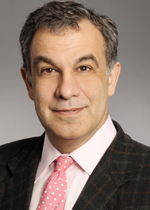 |
|
| Joel Saltz |
|
Biomedical informatics is about using advanced computer tools to manage, sort, analyze, and interpret biomedical information collected from basic, translational, and clinical research studies at Emory and other collaborating research centers across the country. How much data? Taking only one source as an example, the sequence of the approximately 3.3 billion base pairs of the human genome would require more than 3 million pages were this recorded on paper instead of computer chips. In comparison with the complexity of the computer technology that makes possible analysis of data of that magnitude, Hal (in the movie 2001: A Space Odyssey) was a bright but barely competent seventh-grader.
At the heart of the big data show at Emory is the four-year-old Center for Comprehensive Informatics (CCI), established and headed by Joel Saltz, who also heads the medical school's Biomedical Informatics Department (BMI), now in its second year. CCI and BMI have established key collaborations, both within and outside Emory.
In education, for example, BMI collaborated on developing biomedical informatics programs in public health and pathology, a new PhD program in the college's math-computer science department, a new informatics track for the master's in clinical research, and a number of short courses aimed at health care workers and researchers.
In patient care, biomedical informatics plays a huge role in the burgeoning field of health services research at Emory. Informatics is used to mine enormous amounts of anonymous data from electronic medical records, for example, to identify hidden causes of unnecessary hospital readmissions, or to determine which diagnostic test provides the best predictive information for the least cost.
In translational research, CCI and BMI played an important role in recent grant renewals for the Atlanta Clinical and Translational Science Institute and the Center for AIDS Research. And in cancer, work carried out at CCI and BMI increasingly helps Emory combine clinical data with genetic, environmental, and behavioral information to yield new insights.
Saltz came to Emory after having developed clinical informatics systems that changed how pathologists analyze individual tissue samples. Saltz's group created software that can zoom in on one part of a digitized tissue sample, much like what Google Earth does for satellite imagery. Suddenly, previously invisible patterns came into view.
How to make sense of this new data? The team developed informatics to compare individual tissue samples with growing databanks of samples already analyzed and classified by pathologists, thus streamlining and standardizing diagnosis. The next step was to add in broader, more molecular databases.
Saltz says that what is happening at Emory is a perfect example of informatics systems at work—and how their ability to capture and analyze multi-dimensional data at an almost unimaginable scale holds the potential to develop preventive strategies and medical treatments precisely targeted to individual patients.
For example, almost immediately after Emory's CCI was created, it won recognition (and $2.2 million) from the National Cancer Institute (NCI) to develop an "in silico" (via computer) center, headed by pathologist Daniel Brat and Saltz. With recently renewed funding, the center analyzes vast amounts of existing genomic, molecular, pathology, and radiology brain tumor data.
The new Emory MicFG, funded with $4.2 million from the NCI as one of nine members in the Cancer Target Discovery and Development (CTD2) national network, is designed to discover new drug targets for cancer by taking advantage of large amounts of available data on genomic alterations in certain tumors. These alterations often lead to rewired protein-protein interactions (PPIs), changes that transmit signals driving tumor growth. Haian Fu, director and principal investigator of the Emory MicFG, believes that mapping these PPI hubs and pathways will identify new molecular targets for which "pathway-perturbing" drugs can be designed. "Our bioinformatics capability is essential for mining the massive amount of cancer genomics data to help us do this," says Fu.
Saltz believes the promise of biomedical informatics has only just begun. He says, "As we understand more about how diseases start and spread and why some patients respond better to some treatments than others, informatics can assume more of the work of creating and testing treatment and prevention hypotheses, just as the aerospace industry uses computer simulations to test ideas before ever building an actual plane." He adds, "It's exciting to be at Emory, with so many creative, innovative thinkers who are helping informatics realize its full potential."
Read more about biomedical informatics at Emory.
New leadership in transplant and surgery
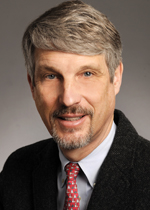 |
|
| Tom Pearson |
|
Tom Pearson has been named executive director of the Emory Transplant Center, effective Jan. 15. Pearson currently is associate director of the center, a position he has held since its founding in 2001. He is also surgical director of the kidney and pancreas transplant program, Livingston Professor of Surgery, and an affiliate scientist at Yerkes Primate Research Center.
Pearson succeeds Chris Larsen, who was recently named dean of the medical school, VP for health center integration in health sciences, and chairman of the board of the Emory Clinic.
Pearson's clinical specialties include islet, kidney, and pancreas transplantation. Together with Larsen, his long-time collaborator, Pearson has played a pivotal role in discovering a new class of immunosuppressive drugs known as co-stimulation blockers. Larsen and Pearson helped drive the development of the co-stimulation blocker belatacept, approved in June 2011 by FDA for kidney transplant recipients. Read more about Pearson.
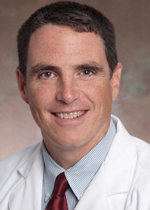 |
|
| John Sweeney |
|
Also effective Jan. 15, John Sweeney will become interim chair of the Department of Surgery as well as interim surgeon-in-chief of Emory University Hospital. Sweeney is currently W. Dean Warren Distinguished Professor of Surgery, chief of general and gastrointestinal surgery, and vice chair for clinical affairs as well as director of clinical quality and patient safety in surgery.
Working with an economist from Georgia State and supported by a grant from the Agency for Healthcare Research and Quality, Sweeney has been a leader in data mining to determine ways to reduce unnecessary hospital readmissions after surgery. Read more about Sweeney and his work in health services research.
Closing the gaps in quality
Each fall, Emory Healthcare offers a half-day quality conference featuring talks by national quality improvement superstars as well as poster presentations from EHC colleagues that highlight ongoing efforts to improve quality in patient care throughout the Emory system.
This year's speakers were Brent James, chief quality officer of Salt Lake City-based Intermountain Healthcare, and Brad Berk, CEO of the University of Rochester Medical Center. Both emphasized the need for standardization.
"Our responsibility in every generation is identifying what's keeping us from reaching our potential," said James. "We measure our success in the lives we save." Berk spoke from perspectives as both a leader and a patient, the latter illustrating on a personal level why improving care processes is so crucial.
On display at the conference were some 45 posters outlining how various EHC teams had tackled age-old, recurrent issues that can compromise quality in health care: preventing infections from intravenous lines, reducing patient wait times for imaging in the emergency department, increasing vaccination rates, minimizing and standardizing radiation exposure in imaging, and communicating with referring physicians, to name a few.
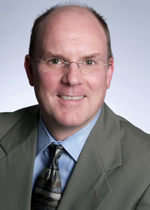 |
|
| Nate Spell |
|
Some of the posters were adorned with a ribbon, awarded by a "secret panel of judges," according to Nate Spell, chief quality officer in Emory University Hospital, in recognition of those who had excelled in applying quality improvement methods. The posters typically stated the problem, the goal, the process used to address the problem, and results. "Understanding what doesn't work can be as vital to our progress as knowing what does," says Spell. "The point is to keep learning how to make things better."
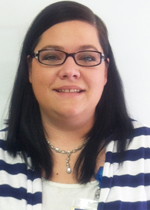 |
|
| Terri Jackson |
|
One poster that earned an award was produced by Terri Jackson, who manages a team of five medical secretaries in Emory Clinic's Referral Management Department. Her team corresponds with referring physicians following inpatient discharge.
The goal of the project was to improve use of the correspondence center's services by teams in cardiothoracic and vascular surgery.
"We implemented the process in May of 2011," says Jackson. "The discharge doctor was supposed to complete a few pieces of information in EeMR [Emory's electronic medical record], which initiated a work queue for my staff to immediately send discharge notes to the referring physician.
"We started reporting back to the departments on utilization in January 2012," she says, "and that's when we started getting some traction. We learned that many of the doctors didn't even know the tool was there in EeMR for them to use or that something beneficial would actually happen if they used it." They also learned that it was helpful if they trained staff like mid-level providers or medical secretaries to use the tool because those staff remained in the section continually and didn't rotate in and out like surgical residents.
"Some of our most highly specialized physicians, who rely heavily on referrals, have had no process in the past for communicating with referring physicians, and it has been gratifying to hear feedback from them after they have started using this tool. They've said, 'We went to a conference, and our colleagues were overjoyed about the follow-up information we're giving them.'"
Jackson says that the tool and process for communicating inpatient discharge information are up and running for all sections across the clinic and that the goal for all-EHC compliance is 70% for the current fiscal year. The goal is realistic, she says. "We're available to provide training wherever it's needed."
$19.4 million contract establishes malaria research consortium
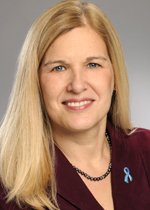 |
|
| Mary Galinski |
|
Along with partners at University of Georgia, Georgia Tech, and CDC, Emory has received a five-year NIH contract of up to $19.4 million to establish the Malaria Host-Pathogen Interaction Center (MaHPIC). Yerkes Primate Research Center will administer the contract. Mary Galinski, (medicine, infectious diseases, and global health) is principal investigator. Galinski, who directs Emory's International Center for Malaria Research, Education, & Development, has been leading malaria research projects at the Emory Vaccine Center and Yerkes for 15 years.
The MaHPIC team will use systems biology to study and catalog in molecular detail how malaria parasites interact with their human and animal hosts. This knowledge will be fundamental to developing and evaluating new diagnostic tools, antimalarial drugs, and vaccines for different types of malaria. The project will integrate data generated by malaria research, functional genomics, proteomics, lipidomics, and metabolomics cores via informatics and computational modeling cores.
The MaHPIC project involves studying both nonhuman primate infections and clinical samples from humans around the world. For the study of malaria, "systems biology" means first collecting comprehensive data on how a Plasmodium infection produces changes in host and parasite genes, proteins, lipids, the immune response, and metabolism.
Computational researchers will then design mathematical models to simulate and analyze what's happening during an infection and to find patterns that predict the course of the disease and its severity. Together, the insights will help guide the development of new interventions. Co-infections and morbidities will also come into play, as well as different cultural and environmental backgrounds of communities involved.
The MaHPIC team also will develop a public website and specialized web portal to share the project's data and newly developed data analysis tools with the scientific community worldwide. Read more.
Medical school establishes iPSC lab
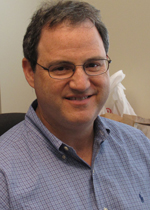 |
| Gary Bassell |
The medical school has established a lab dedicated to generation and use of induced pluripotent stem cells (iPSCs) for translational research and drug screening. In iPSC technology, researchers can take a patient's skin or blood cells, reprogram them into an immature, embryonic-like state, and then differentiate them into particular tissues. This technology could open doors for truly personalized medicine and drug discovery.
The Laboratory of Translational Cell Biology (LTCB) will specialize in neurological disorders such as fragile X syndrome, autism, spinal muscular dystrophy, Alzheimer's disease, and ALS.
The LTCB will also use iPSCs to study genetic defects that cause infertility. A particular area of interest is diseases with impairments in cell structure and dynamics, which need the use of microscope-based assays to visualize disease processes and identify how drugs may restore cell function.
The LTCB will develop iPSCs as tools for research and drug screening, rather than introducing iPSCs into patients as therapies.
Gary Bassell (cell biology and neurology) is scientific director of the LTCB. Read more.
Expanding tools in radiation oncology
One in a series of profiles of people in the Woodruff Health Sciences Center
 |
| Tim Fox |
In 2016, when the Georgia Proton Treatment Center* opens its doors on the corner of Peachtree and North Avenue, adjacent to Emory's midtown campus, it will be a dream come true for many, and for no one more than Tim Fox, director of medical physics in radiation oncology. With the addition of proton therapy, Emory's Winship Cancer Institute will be one of 10 centers nationwide offering patients every type of tumor-destroying radiation that exists.
Fox joined the faculty in 1994 and became chief of medical physics in 2003. The major part of his job in radiation oncology—and the work of the 15 PhD- and master's-level physicists and eight dosimetrists he currently oversees—involves planning and providing extremely precise radiation treatments. Before beginning radiation therapy, most patients have a CT scan and then wait several days while the oncology team creates a personalized plan to maximize tumor destruction while minimizing damage to healthy tissue.
That's what makes the medical physicist's job so challenging, says Fox. And it's also what makes adding proton therapy to Emory's arsenal so exciting. Currently, traditional therapy may involve technology combining intensity-modulated radiation therapy, which breaks large radiation treatment fields into hundreds of small pencil beams, with unique beam trajectories and orientations that "paint" different levels of dose into the tumor volume. Another tool is brachytherapy, which uses radioactive "seeds" that can be placed inside or alongside prostate, gynecologic, and other tumors, delivering small-dose, constant radiation from the inside out.
Each of these traditional therapies uses photons. Proton therapy gets its power because protons release a burst of energy when they reach the end of their path at the site of the tumor (known as the "Bragg peak"). Proton therapy enters the skin with very little dose and then gives up almost all its dose at one spot. It is particularly appropriate for highly sensitive areas like the brain, eye, or prostate. Think, for example, of a small child with a tumor behind the eye. Calibrated precisely, the protons pass through the optic tissue with very little dose, deliver their entire payload at the tumor site, and quickly fade away with no radiation left to harm the brain.
In addition to helping design therapy plans for patients, Fox is responsible for ensuring that the complex machinery involved in generating and delivering radiation is perfectly calibrated to deliver the correct radiation dose. Emory's radiation oncology section manages 12 linear accelerators in metro Atlanta. As opposed to the weaker rays needed for diagnostic medical imaging devices, the X-ray energy produced by accelerators is so high that each one must be surrounded by three feet of concrete with massive protective doors. These accelerators must be monitored every day, but that will seem simple compared with the calibration and quality assurance required for the highly complex proton therapy center equipment, which will operate 16 hours a day, six days a week.
A faculty member in both the medical school and at Georgia Tech, Fox has designed medical imaging software, and he teaches medical physics students at Tech and radiation oncology residents at Emory. He also has been known to share his love of math and physics with lay audiences, including most recently at TEDxPeachtree last month, where he gave a 10-minute talk on why math is oncology's new best friend.
Over the next three years, as Emory gears up for the proton center's opening, Fox will be seriously recruiting, with a plan to more than double his medical physicists team. There's a lot in play, but the former college baseball player is ready for what comes next.
*To be operated by Emory Healthcare, the new center is being built and will be owned by Advanced Particle Therapy, with equipment supplied by Varian Medical Systems. Read more. | |
 |
|
From the Executive VP
Impact of Woodruff vision continues to grow
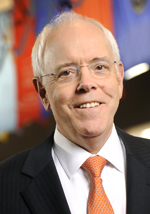 | |
| Wright Caughman |
|
Today we celebrate what would have been the 123rd birthday of Robert W. Woodruff, the health sciences center's namesake and greatest benefactor. His legacy still lives on in the groundbreaking work being done by our faculty and staff. Mr. Woodruff, legendary leader of The Coca-Cola Company, was truly a visionary. In his transformative lifelong giving to the health sciences at Emory, he foresaw the tremendous community impact an academic health sciences center would have, both in Atlanta and across the state. Today, 27 years after his death at age 95, that impact continues to grow, as seen in Can-Do Compassion: The 2012 Community Benefits Report.
For far too many of our Georgia neighbors, 2012 was another year of financial hardship. For many their challenges were compounded by health problems they and their families could not afford. As the need in our community has grown, we have risen to the occasion to meet it.
In 2012 we provided more than $72 million in charity care to people in need—an increase of 4.9% over 2011, which was itself an 8% increase over 2010. Regardless of their ability to pay, thousands of Georgia's working poor, unemployed, uninsured and underinsured, children, seniors, veterans, and others received compassionate, cutting-edge care when and where they needed it.
Some of these courageous people are profiled in Can-Do Compassion, including a father with acute congestive heart failure who lived to see his son graduate from high school thanks to the coordinated and uncompensated efforts of his health care team; a teenager with type 1 diabetes who became "man of the house" when his father died unexpectedly and who can now concentrate on his health, his future, and his family rather than his massive medical bills; a single mother battling a brain tumor who lost her job and her health insurance just two months after her diagnosis but who continued to receive the compassionate, cutting-edge care she needed; and many others.
As we enter the holiday season, we in the Woodruff Health Sciences Center are grateful for the opportunity to serve our neighbors in their time of need. We're grateful for you—the faculty, staff, and friends who make our lifesaving and life-affirming mission a reality—and we're grateful for Mr. Woodruff, whose vision and generosity made it all possible. To learn more about the extraordinary impact of the Woodruff Health Sciences Center, please read the 2012 Community Benefits Report.
Best wishes for a happy holiday and a healthy new year.
Thoughts and suggestions welcome at evphafeedback@emory.edu.
In brief
Wold named Georgia Professor of the Year
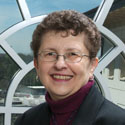 | |
| Judith Wold |
|
Judith Wold, clinical professor in nursing, was named the 2012 Georgia Professor of the Year
by the Carnegie Foundation for the Advancement of Teaching and the Council for Advancement and Support of Education.
The U.S. Professors of the Year awards program recognizes outstanding faculty across the country and is the only national program to honor excellence in undergraduate education. Wold's career has spanned nearly three decades and now focuses on teaching public health nursing. She is perhaps best known at Emory for leading the Farm Worker Family Health Program, which provides health care services to migrant farm workers in south Georgia. Under her leadership, the program has expanded to include additional students and faculty at Emory and at other colleges and universities in Georgia. Read more.
RSPH receives maximum accreditation
 | |
| James Curran, RSPH dean |
|
The Council on Education for Public Health recently renewed accreditation for the Rollins School of Public Health for the maximum seven-year term. After the school completed a self-study report last March, a team of peer reviewers conducted an on-site visit to RSPH in April to validate the self-study findings. Accreditation factors considered include the school’s mission, goals, evaluation, planning, institutional environment, organization, administration, governance, resources, instructional programs, and faculty and students. The self-study and site process was led by Executive Associate Dean Richard Levinson and Laura Lloyd, director of continuing professional education. Read more.
RSPH health policy expert launches Medicare partnership
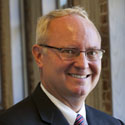 | |
| Ken Thorpe |
|
Ken Thorpe, chair of Health Policy and
Management at Rollins School of Public Health, and Douglas Holtz-Eakin, former director of the Congressional Budget Office, are co-chairs of a new bi-partisan organization focused on ensuring sustainability of Medicare. The organization, called the Partnership for the Future of Medicare, will commission research from institutions and think tanks, focusing on questions
regarding Medicare's future. The research is intended to help policymakers better
understand how to improve the quality of care Medicare provides while putting the program on a sustainable financial path.
Read more.
Annual Emory Veteran's Day flag-raising
The Emory Veterans Association held its annual flag-raising ceremony on Nov. 12. View a group photo of participants. Read names and contributions of those who organized the event. View a list and slide show of Emory veterans, which includes a former executive VP for health affairs.
Notable
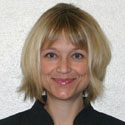 | |
| Kiera von Besser |
|
Kiera von Besser (emergency medicine) was appointed by the governor to the Georgia Board of Community Health. The board establishes the general policy for the Department of Community Health, which serves as the lead agency for health care planning and purchasing in Georgia. Read more.
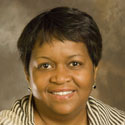 |
|
| Lynell Cadray |
|
Lynell Cadray (nursing school admissions) has been appointed associate dean for enrollment and student affairs and chief diversity officer in the nursing school.
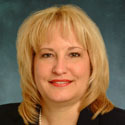 | |
| Dee Cantrell |
|
Dee Cantrell (Emory Healthcare) was named chief information officer of the year in the nonprofit/public sector by the Georgia CIO Leadership Association. Cantrell is the only two-time recipient of this award. Read more.
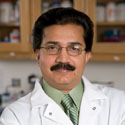 | |
| Joshy Jacob |
|
Joshy Jacob (microbiology and immunology) received a Grand Challenges Explorations Award, funded by the Bill & Melinda Gates Foundation. Jacob's research aims to enhance efficacy of infant vaccines by overriding suppression from maternal antibodies. Read more.
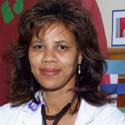 | |
| Veda Johnson |
|
The Emory Pediatric Urban Health Program, whose executive director is Veda Johnson (pediatrics), received a $500,000 grant from Healthcare Georgia Foundation to fund start-up of three school-based health centers to improve health outcomes for at-risk children. Read more.
 | |
| Nadine Kaslow |
|
Nadine Kaslow (psychiatry) is president-elect of the American Psychological Association for 2013. Read more. She also recently received the 2012 Elizabeth Hurlock Beckman Award, which recognizes the influence of extraordinary professors on the future of their students. Read more.Kaslow serves as the chief psychologist for the Grady Health System.
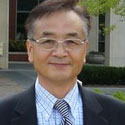 |
|
| Timothy Park |
|
Timothy Park has been named the first director of pastoral services at Emory Johns Creek Hospital. Park served as a chaplain at both Emory University Hospital and EUH Midtown and spent almost 20 years pastoring in the Presbyterian Church. Read more.
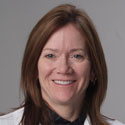 | |
| Leslee Shaw |
|
Leslee Shaw (cardiology) will receive a Red Dress Award from Woman's Day magazine at their 10th annual gala in February. The awards spotlight those who have made a significant contribution to the prevention of heart disease in women.
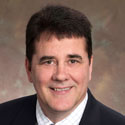 |
|
| Michael Windle |
|
Michael Windle (behavioral sciences and health education, public health) received a five-year, $1 million NIH Research Scientist Award to continue his 23-year research on impact of alcohol use across the life span, including long-term implications of alcohol abuse in young adults. Alcohol abuse in the young can impair brain development and is associated with the three highest causes of adolescent mortality (suicide, homicide, and drunk driving) and with increased rates of sexual assault and sexually transmitted diseases. Read more.
Events
Dec. 6: Medicolegal and Ethical Aspects of Neuroradiologic Imaging, by Leonard Berlin (Rush Medical College), Room 110, James B. Williams Medical Education Bldg., 5:30-6:30. More info.
Dec. 7: Free Parkinson's screening day, by appointment only. Call 404-778-7777. More info.
Dec. 11: Violence Against Women: Implications for Health Care and Society, by Debra Houry (emergency medicine). Annual Mary Lynn Morgan Lecture, 6:00 p.m., Klamon room, 8th floor, Claudia Nance Rollins Bldg. More info.
Dec. 12: Health Care CEO Panel Discussion, including Ravi Chari (VP of HCA), William Ferniany (CEO, UAB Health System), and John Fox (CEO, Emory Healthcare), 6:30-8:30, Goizueta Business School, East Wing Auditorium, 130. More info.
Jan. 15: Educational Implications of a Changing Clinical Future, by James Woolliscroft, dean, University of Michigan School of Medicine. Future Makers Lecture Series, 5 p.m., WHSCAB auditorium. More info.
Feb. 7: Evolving Paradigms in Clinical and Translational Research, by Dennis Liotta. Academic & Industry Intersection Conference, Emory Conference Center, 11:30-5:30. More info. |

